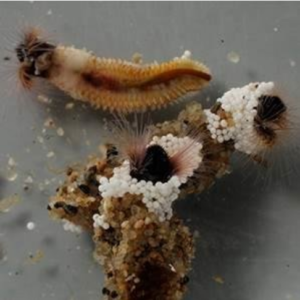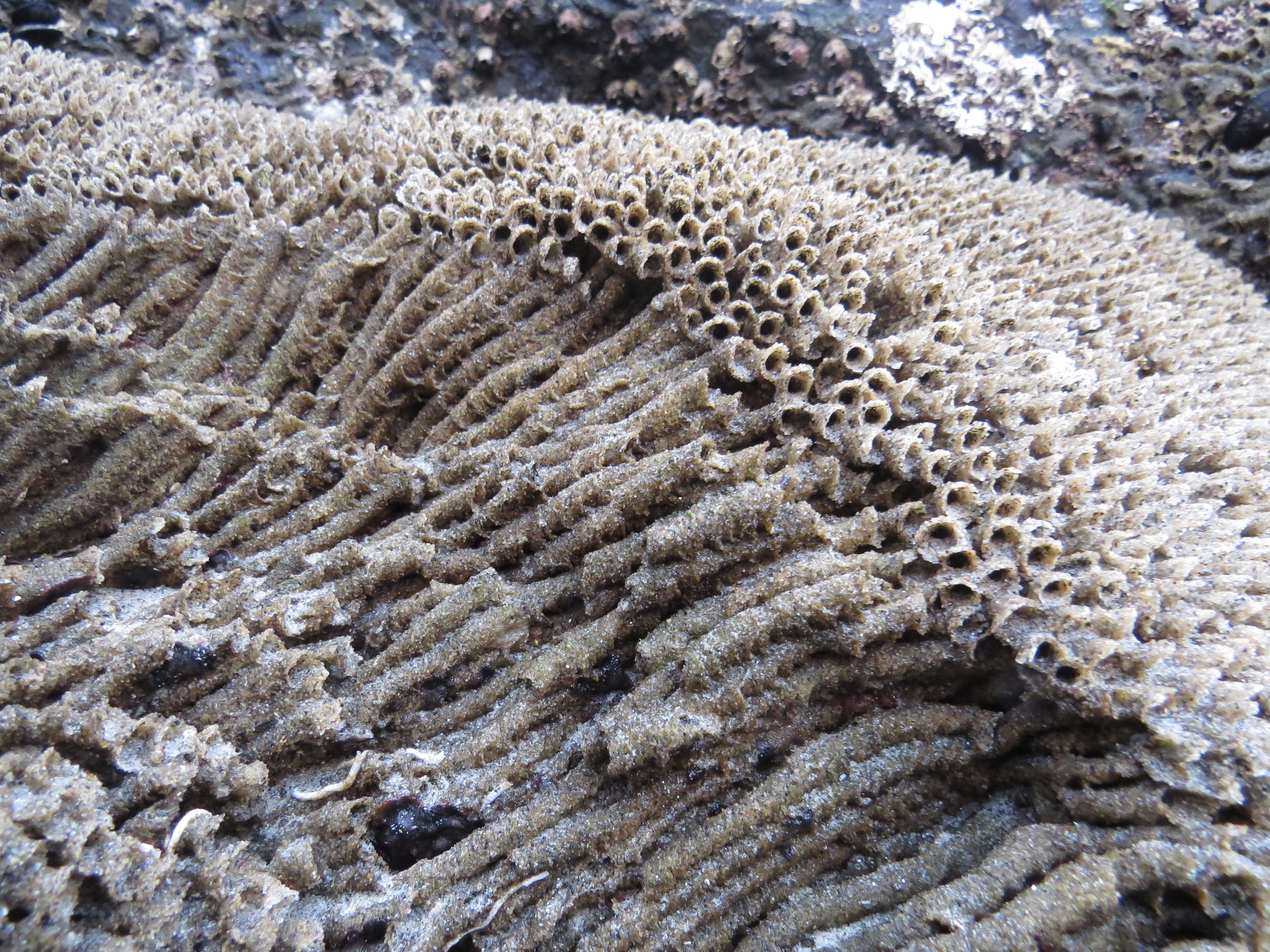 A research team from the Technical Institute of Physics and Chemistry at the Chinese Academy of Sciences has discovered that sandcastle worms, marine creatures about two inches in length, construct intricate, honeycombed, reef-like structures by binding sand grains together. The composite adhesive they secrete contains both cationic and anionic proteins, enabling them to firmly unite grains that result in remarkably resilient structures.
A research team from the Technical Institute of Physics and Chemistry at the Chinese Academy of Sciences has discovered that sandcastle worms, marine creatures about two inches in length, construct intricate, honeycombed, reef-like structures by binding sand grains together. The composite adhesive they secrete contains both cationic and anionic proteins, enabling them to firmly unite grains that result in remarkably resilient structures.
 The team developed natural-based, low-carbon building materials by using oppositely charged bio-polymer adhesives so that they can construct these innovative materials from various grains, including desert sand, sea sand, and concrete slag. The process was achieved under low temperature and atmospheric pressure, making it both sustainable and energy-efficient.
The team developed natural-based, low-carbon building materials by using oppositely charged bio-polymer adhesives so that they can construct these innovative materials from various grains, including desert sand, sea sand, and concrete slag. The process was achieved under low temperature and atmospheric pressure, making it both sustainable and energy-efficient.
These sandcastle-inspired materials could be the key to reducing energy consumption and carbon emissions significantly while offering superior mechanical performance.
As the world grapples with climate change and the need to reduce carbon footprints, this discovery serves as a reminder that inspiration can be found in the most unexpected places. It challenges us to think outside the concrete box.
The team’s findings were published in the journal Matter.
You can read the original article at interestingengineering.com


They do sandcastles, but do they have sandmansions?
The photos look like sandmansions to me!